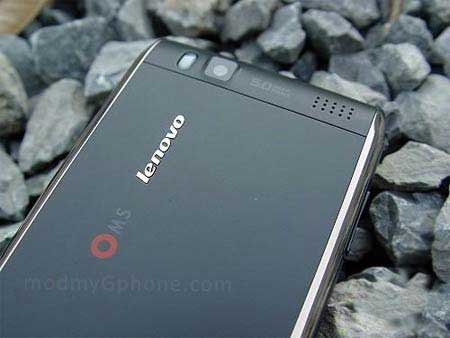Lenovo recently announced a new phone called Lenovo OPhone in partnership with China Mobile. Here I am sharing the first look of the Ophone. It is the company’s first Android-based smartphone and is designed for the Chinese market.

The OPhone featured a 3.5-inch touchscreen display with a resolution of 480×800 pixels, a 5-megapixel camera, and support for 3G connectivity.
The device will be powered by a Qualcomm MSM7201A processor and will run on the Android 1.5 Cupcake operating system. It also featured Lenovo’s own custom user interface, which is designed to provide a unique user experience.
One of the key features of the OPhone was its integration with China Mobile’s OPhone platform, which provided access to a variety of services such as mobile payments, social networking, and multimedia content.
Here is the features of Ophone
Design:
The OPhone has a sleek and stylish design with a black and silver color scheme. It featured a physical home button on the front and a 3.5mm headphone jack on the top. The back of the device has a textured finish, and the 5-megapixel camera was located in the upper left corner.
Display:
The OPhone’s 3.5-inch touchscreen display has a resolution of 480×800 pixels, which was considered high-end for its time. It used capacitive technology, which allowed for multitouch gestures and smooth scrolling.
Camera:
The OPhone’s 5-megapixel camera has autofocus and an LED flash. It is capable of capturing photos and recording videos at a resolution of 640×480 pixels.
Processor and memory:
The OPhone is powered by a Qualcomm MSM7201A processor clocked at 624MHz. It has 256MB of RAM and 512MB of internal storage, which could be expanded up to 32GB using a microSD card.
Connectivity:
The OPhone supported 3G connectivity with HSDPA speeds of up to 7.2Mbps. It also has Wi-Fi, Bluetooth 2.0, and GPS capabilities.
Battery:
The OPhone has a 1500mAh battery, which is considered quite large for a smartphone at the time. It is capable of providing up to 250 hours of standby time and up to 4 hours of talk time.
Software:
The OPhone ran on Android 1.5 Cupcake operating system, which is considered outdated even when it is released. However, Lenovo has customized the user interface to provide a unique user experience. It also featured integration with China Mobile’s OPhone platform, which provided access to a variety of services and content.
Conclusion
Overall, the Lenovo OPhone is a significant device for Lenovo as it marked the company’s entry into the smartphone market and helped establish its brand in China.
